A Beautiful Day at the Museum
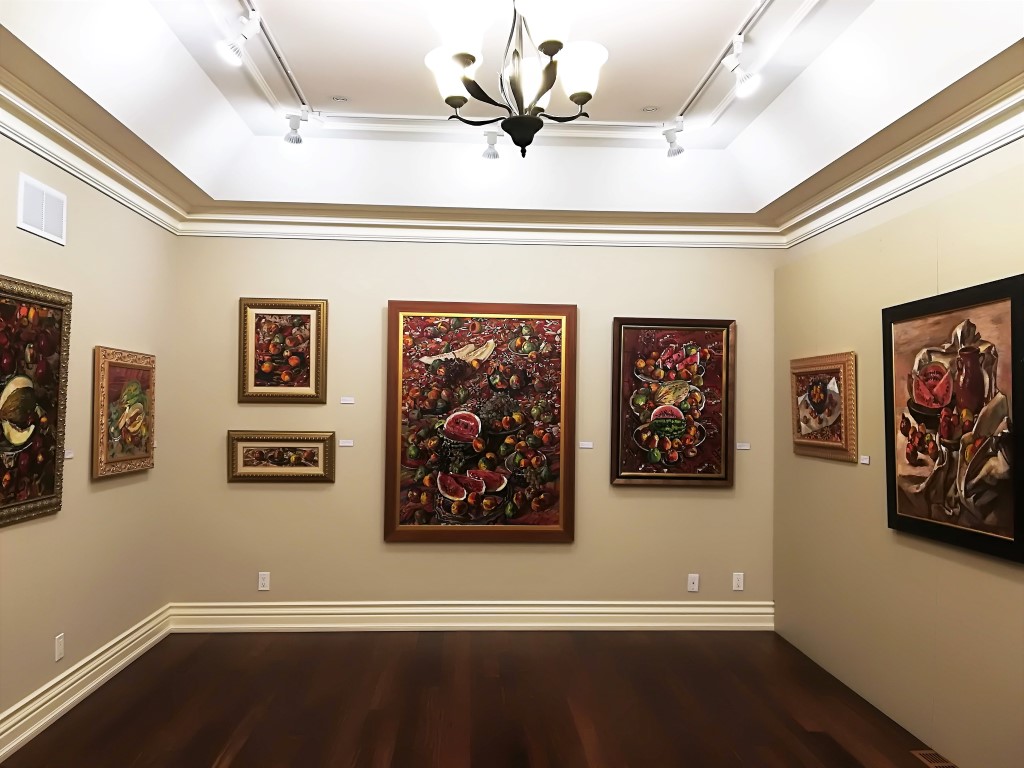
(Interview with Keya Bayramova)
Gönüllümüz Aslıgül Atabay, Nisan ayı içinde Türkmenistan’ın yetiştirdiği önemli resim sanatçısı Durdy Bayramov adına kızları tarafından 6 Nisan 2018 tarihinde Toronto Üniversitesi’nde düzenlenen bir etkinliğe katıldı. Ardından kendisi adına düzenlenen müzeyi ziyaret ederek, kızı Keya Bayramova ile babası, yaşamı ve eserleri konusunda ve
Türkmen kardeşlerimizin yaşamlarından kesitler de bulabileceğiniz güzel bir ropörtaj gerçekleştirdi.
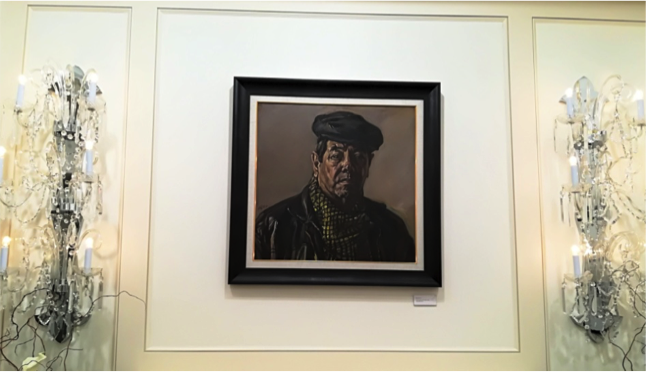
Aslıgül (A): Thank you for accepting to have an interview with us here today Keya. When I read Durdy Bayramov’s biography, one thing hit me; the fact that he was raised up in the shadow of Second World War at an orphanage. Usually that kind of difficult, desperate times influences one in a negative way. However, just on the contrary to what difficulties he has been through, Mr. Bayramov’s paintings and photographs portray his subjects in such a vibrant, vivid, colorful way conveying the viewers joyfulness, interacting with them and also making the viewers of his works feel themselves lively and full of joy. How did he achieve to transform the difficulties of his life in your opinion, all these difficult emotions as to reflect something beautiful, colorful, lively, energetic and all positive in his works? Also, related to this question, how do you think your father’s past has influenced him and his works and artistic career in your opinion?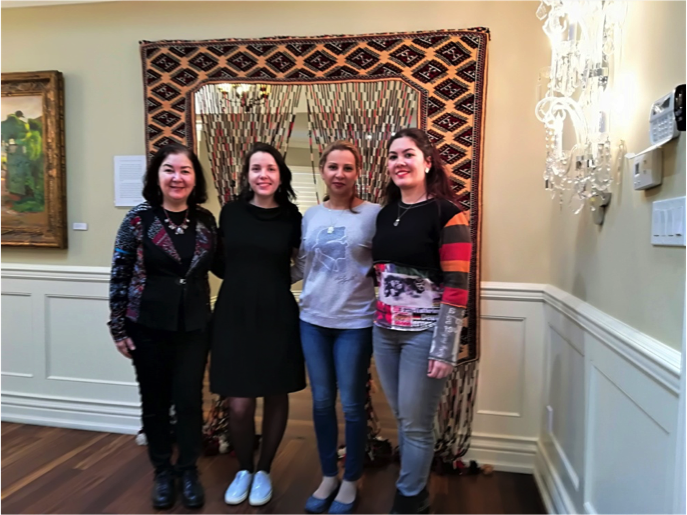
Keya (K): Thank you for coming with your family today. We always love to see our Turkish sisters and brothers. It’s an honor for us to collaborate and I believe being together we can strengthen our efforts to promote our cultures. Regarding my father, thank you for all your beautiful words and observations. My father, as you mentioned has grown up at an orphanage. He had a difficult life. Despite being an orphan, he has achieved so much, which made him very happy. However, despite the accomplishments he always felt the void of not knowing his biological parents. Hopefully the story I am about to tell will give you a glimpse into my father’s longing for his parents. When my dad turned seventy years old, he had an exhibition in Turkmenistan. The exhibition was a great success. On that day the President of Turkmenistan awarded my father with the highest honorary medal “For the Love of Motherland”. It was a beautiful event, and in the evening, after coming back home, I entered my father’s office only to find him crying. He was sitting in his working chair and shying away his face so I wouldn’t notice. In my entire life, I had never seen him crying before. I got really worried and asked him what had happened? His answer was short but struck me deep to my core. He said “I am the happiest person in this world. I have everything that I dreamt of, including my family, my children, the work that I love and my dear friends around me. Still, after all these years, I want to take a glimpse at my parents with the corner of my eye, just to see what they looked like.” He was 70 years old when he told me this, and it was precisely then that I understood my father’s longing for his parents. He was an older man, yet inside him was a young boy who was looking for his mom and dad. Now after losing my dad, I understand how it feels. I asked myself, how could he live through his life without having anybody. I am lucky to be one of four sisters, and every day I have the opportunity to call them and talk to them. I cannot imagine my life without this routine. Even though my father was an orphan, he was a happy person who appreciated everything around him. The smallest things would make him happy. One saying of his that stayed with me to this day is “Nature is my sanctuary.” He considered the universe and this world as endlessly beautiful, and found beauty in things that others did not. Every day he was grateful to be alive and be a part of this world.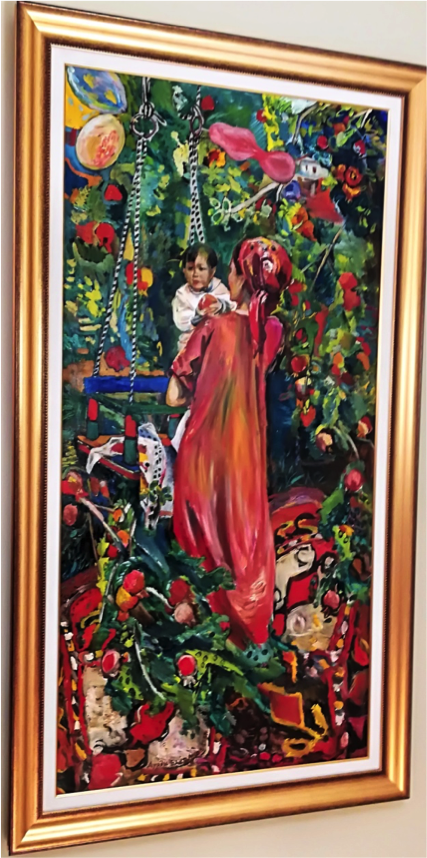
A: His happiness also reflects well in his works as well. It is evident to see his use of colors, to read his joyfulness from his paintings.
K: Yes, his joy is reflected, as you said, in his paintings. Something that most people observe is that black color is not noticeable in his paintings. Certainly, he mixed various colors, but if you take a closer look at all of his paintings including portraitures and still-lives, you will not find any bold black color.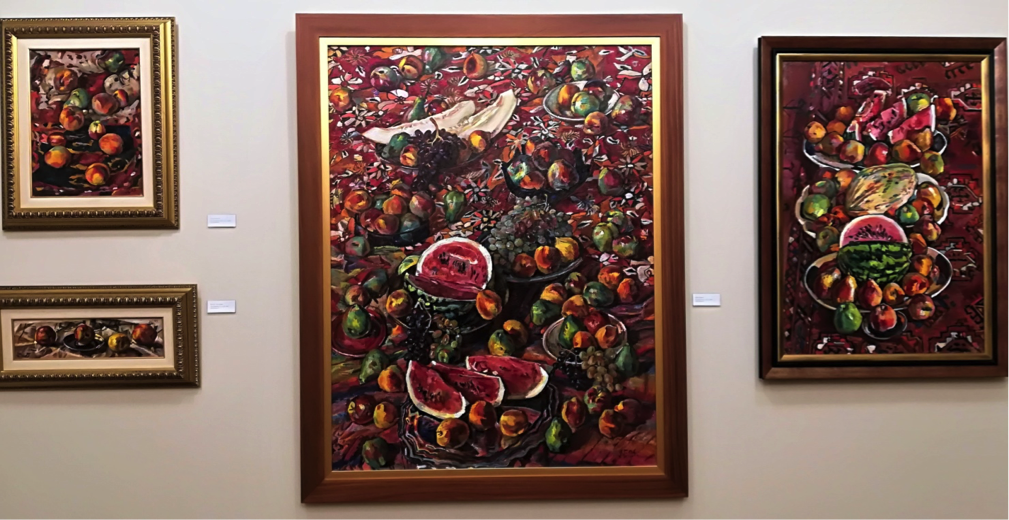
The predominant color in Turkmen carpets is burgundy red, and green, which is reflected in our flag, while many other bright colors are frequently used in Turkmen cultural artifacts. In 2012, my father first came to Canada and was amazed by the beauty of this country. Prior to this, when I used to ask him to visit he was hesitant saying that “Canada is too far away”. However, when he came here, he was so happy. It was summertime, and the breezy Canadian summer greeted him with a smile. He was lucky to witness the transition of summer to a beautiful Canadian autumn. The importance of this and his impression of Canada are particularly felt through the series called “Canadian Autumn” which he created in a matter of six months. He painted every day of his stay in Canada. I don’t remember a single day when my dad was not working on his paintings. This dedication and commitment is reflective of his love of art. If he was not painting, he was teaching art. He never had any other job.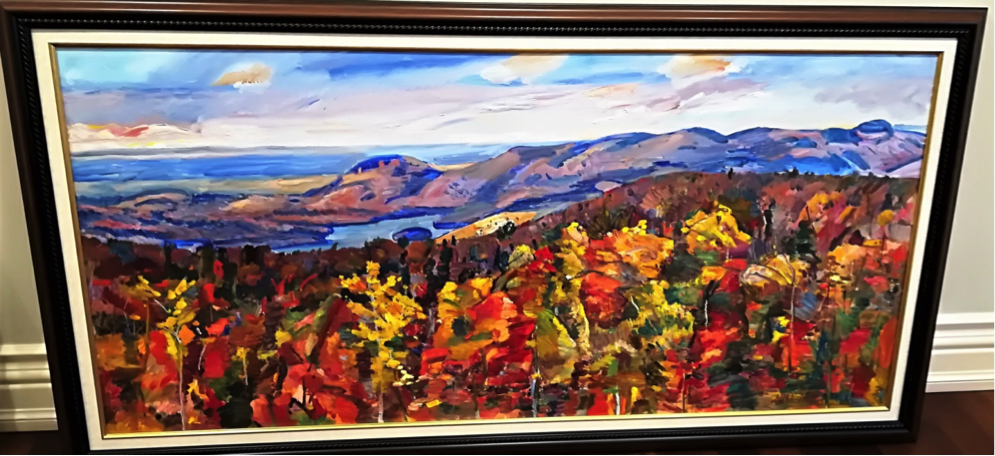
A: He was lucky to earn his life by doing something he loved and was able to afford looking after his family by doing only art. What can you tell us regarding Mr. Bayramov’s muses, his sources of inspiration dear Keya? At the website dedicated to him as well as that you’ve told us today, he was deeply influenced by the Turkmen villagers’ way of life, their culture and everything about them, basically being a Turkmen himself, is influenced from his own roots, as far as I have observed. What can you say about the Turkmen way of life’s, Turkmen villagers’ impact on Durdy Bayramov’s works?
K: When my father was in high school, he was not a child who dreamed of becoming an artist. Looking back now, I can say with assurance that it was destiny. After sixteen years of age, the government in Turkmenistan was not legally responsible for the orphans, and they were expected to leave the orphanage finding their own routes. After turning sixteen, my father and his friends decided to apply for colleges. One of my father’s friends wanted to apply to a vocational college, while my dad applied to become a “tractorist” (tractor driver) there. On their way, they met with another friend who was two years older, but also from the same orphanage. He asked my father (and his friend) where they were headed, and my father responded that they are going to submit the papers to continue their studies at the vocational college. The friend then asked my father if he would be interested in joining their faculty at the college of art. My father told him that he does not know how to draw or paint and that he does not even know how to hold a pencil properly. The friend who was studying art responded “You will learn it eventually.” He convinced my father to submit the application to the art college by saying that the students are paid a stipend, provided accommodation along with two sets of clothes every six months. For an orphaned kid, this was extremely valuable. At that point, my father changed his route and applied to art college. As you see, being an artist was his destiny. Throughout his studies, he was a successful student. In a way, he was lucky because his first teacher was Gennadiy Brusentsov, who was a renowned and skillful painter in the Soviet Union. As a teacher, he was admired by my father till his last day. He had a tremendous influence on my father, and was a great friend of his. In our archive today we have heartbreaking letters exchanged between my father and his teacher. These letters reflect a teacher who was always supporting his student, and my father, on the other side, saw him as a great friend and a father figure. After graduating from college, my father was admitted to one of Russia’s prominent art colleges, Moscow’s Surikov Art Institute. Considering Turkmenistan’s history in the Soviet Union, the art studies were influenced by a Soviet school of painting. After finishing his university in Moscow, my father returned to Turkmenistan. He integrated his knowledge of painting to Turkmen culture by using bright colors. It was a different and a unique way of painting learned from the perspective of Russian art. One distinction that I would like to point out is that Russian artists use an abundance of grey, brown, black colors in comparison to brighter colors. Perhaps this is because Russia doesn’t have as much sun we do in Turkmenistan. Another great teacher of my father was Izzat Klychev, who was the People’s Artist of USSR and an Academician of Art like my father. He was the one who ignited the love of Turkmen culture in his paintings, and my father was deeply influenced by both Gennadiy Brusnetsov and Izzat Klychev.
A: I am glad that you have already mentioned by yourself the influence of Mr. Gennady Brusentsov and Izzat Klychev on your father because I was just going to ask you this question; that how those people artistically or personally influenced Mr. Bayramov.
K: I believe the following story will answer your question. Once when painting en plein air (out in the open nature) my father was standing between Izzat Klychev and Gennady Brusentsov. The three of them were painting the same landscape, and when my dad looked to his sides to see what Klychev and Brusnetsov were painting, he noticed that the three of them were painting three totally different things because their perspectives was different. That’s when he understood that each artist has to be unique in his own right and own a certain style.
A: When I visited the museum today as well as the website dedicated to Durdy Bayramov, I resembled the authenticity of his works and his use of colors to Paul Gauguin and Van Gogh among the Western artists, who both have painted their sources of inspiration in a colorful, vibrant way, and whose works have been sources of inspiration for the later generations. But in terms of style, I found your father’s style to be unique, to be a mixture of realism and impressionism maybe, but belonging actually to neither one of those styles. What can you say about Mr. Bayramov’s artistic style?
K: Thank you so much for this observation. For me, as a daughter, it is very difficult to talk about his artistic style or how different he was from other artists. As a person who studied art, I see that my father was different and had a distinctive style. Certainly, he was also influenced by great Spanish, Italian and Dutch artists. However, his artistic pull was towards Spanish artists.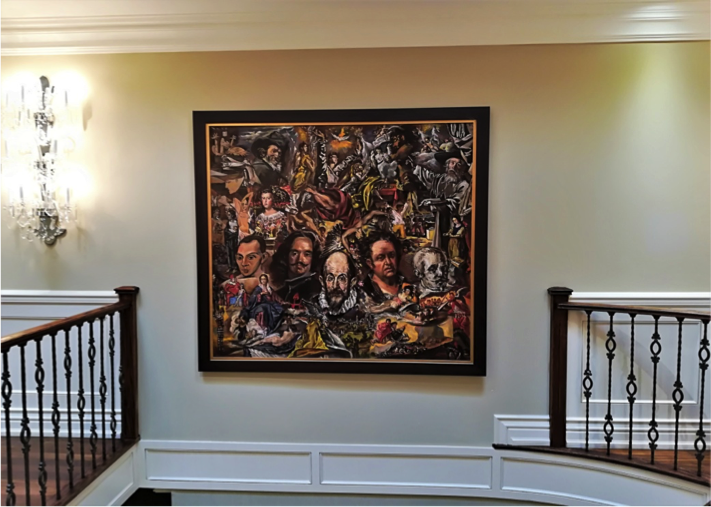
There is a painting that took my father 16 years to complete. It is hanging at our museum today in our permanent collection. This painting incorporates five Spanish artists revered by my father, and it captures them in different centuries. There are many other Spanish artists that my father admired, yet this painting depicts only those that he admired the most, including Francisco de Zurbaran, Francisco Goya, El Greco, Diego Velazquez and Pablo Picasso. He never admitted this but by looking at his diary, I see that El Greco is the painter that my father was truly drawn to. In his own interviews, when asked about his favorite artist, he used to say that he admired many. This is true, however, after so many trips to Europe with my father, I can say that his preference goes to El Greco. He could spend an entire day, from morning to sunset in front of a single El Greco painting without any lunch. The employees of the museum used to invite us out saying that the museum is closing and asking to come back tomorrow. It was incredible to observe how he could spend endless hours and in front of El Greco paintings not realizing that his entire day had passed.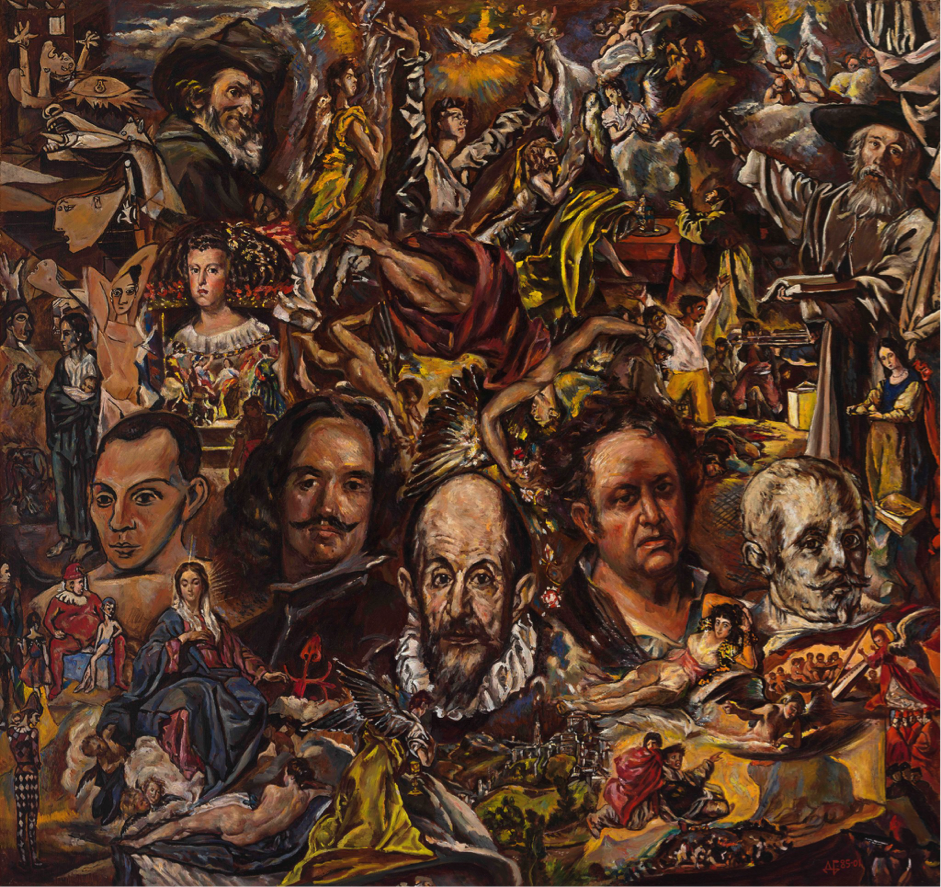
A: El Greco was Durdy Bayramov’s one of the strongest muses then, and I am very privileged to hear this information. Because like you have said, sometimes the artists themselves don’t spell out such kind of information, as they might even not knowing themselves whatever inspires them the most.
K: Exactly. I also would like to add that in terms of style, my father was dedicated to traditional realism. He loved all genres of painting. From still life, landscapes to thematic compositions I think his main and favorite genre was portraiture. We had this conversation with my dad a few times as to why he loved portraits, and his answer was “I love people… maybe that’s why this is my favorite genre.” He painted so many portraits in his life from different social groups, including villagers to the most influential people in the country. By looking at his unique series of portraits of cultural people of Turkmenistan, it looks like my father was the only artist in the world who did this. In over 150 paintings, he captured notable people of Turkmenistan who have contributed to cultural development during their lifetime. He started this series in his early 60s and finished it in his last days in 2014. He never mentioned to anybody what he was doing. People knew they had their portraits taken but never knew that their portraits were a part of an important series. The series of portraits included artists, composers, writers, ballerinas, people from the theater and movie industries, the architects and many others. Basically, the series included all the people who devoted themselves to the development of arts and culture of Turkmenistan. There were even a few doctors that were included in these series. I asked my father why he included the two surgeons in the series, and his response was “to be a good surgeon you need to be a good artist.” Also, whenever he painted a portrait of people that he didn’t know closely, he made sure to spend time with them for a few hours. That way he got to know them before painting them. Perhaps that is one of the reasons why his portraits are so powerful: they fully capture the life story and disposition of every person. As a part of the series, he aimed to paint a lot more people, but unfortunately he passed away before completing the portraits of everyone for this series. Undoubtedly, there are a lot more people who deserved to be in his cultural series. Hopefully one day somebody else will continue adding to this historically and socially important work.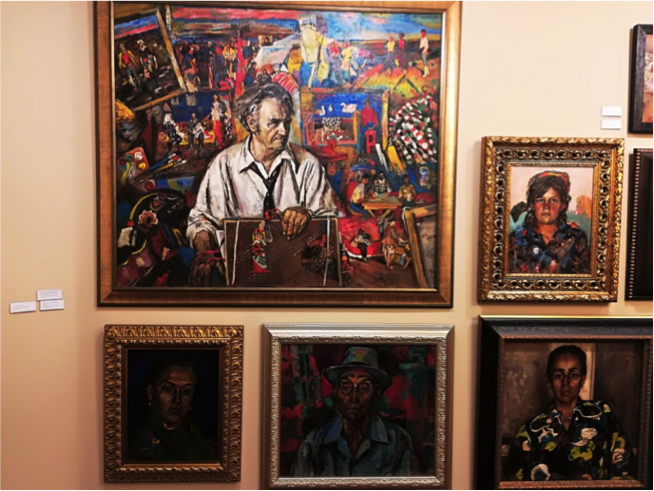
On our end, at the Foundation, we are working on project about this series which involves creating a publication about this cultural series. Our research is conducted through contacting the individuals that my father painted for this series, interviewing them and collecting information regarding their paintings. Some of the questions we ask are about the poses, the sitters’ interaction with my father, and the conversations they had. Hearing what they talked about during posing and whose idea was to paint the portrait opens up a treasure chest of valuable information about the portraits we have today. Each case is very unique and the topics they have conversed about are completely different from each other one.
My father also used to say “I have a special connection with flowers.” In our family, the flowers were never reached the garbage pale. He would take the bouquet of flowers and transfer them to his paintings, making them live forever through his art. He used to name them by dates, or sometimes by dedication. Most of the times his flower paintings were dedicated to someone: his friends, parents, his first teacher, Izzat Klychev or his daughters. In some of his dedications, he would just name them “flowers” and then add a simple date. We knew within the family whom he dedicated those flowers to as dates reflected important events including birthdays. For instance, once he wrote “Flowers dedicated to February 1st” we knew that the date is my mother’s birthday and the painting was dedicated to her. There are paintings with various flowers that have February 1st as a date, yet the year is different. This way we knew who the flowers belonged to, and which birthday it was.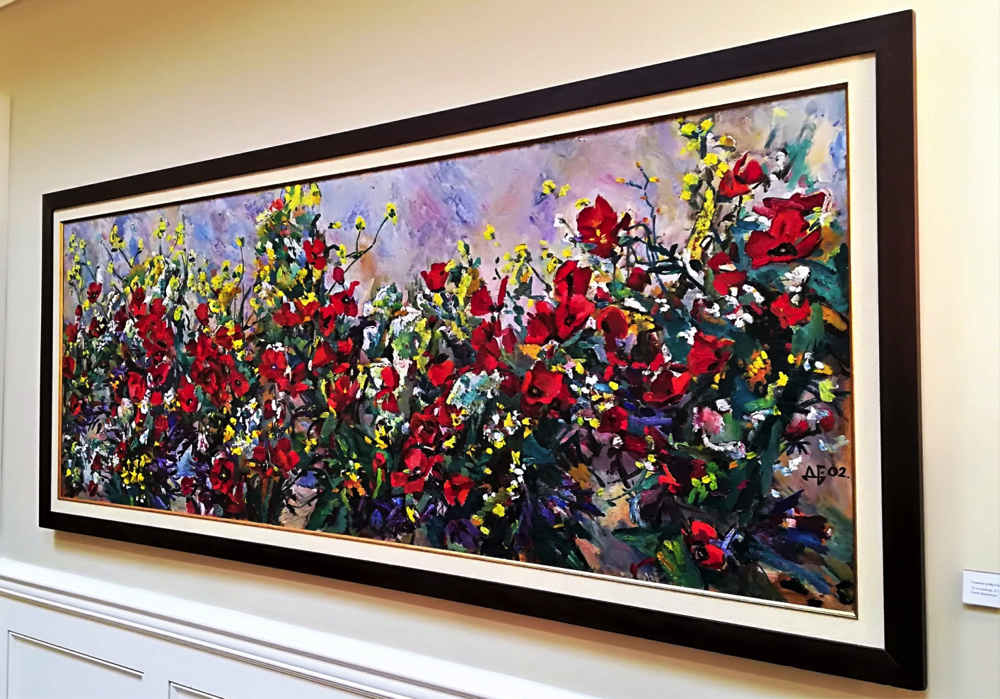
A: As a very successful artist in his field, what do you think your father’s secret of being a successful, accomplished artist in your opinion?
K: I think there is no secret to becoming a successful artist. In my father’s case, the success is exemplified by his hard work, dedication and his love of art, which gave him a fulfilled and happy life. Just like in every other field, if you want to be successful, you have to work hard.
A: Again, I would like to thank you on behalf of Telve magazine for your time and accepting to have an interview with us today. It’s a great pleasure to be here with you today and to visit the museum under your guidance.
K: Thank you so much for coming. We would love to see more members of the Turkish community come and visit our museum. The Foundation is committed to expanding knowledge and art appreciation through collections-based research and publication, as well as facilitating access for scholars and the public to our permanent collection, library, and archives. We welcome all ideas for collaboration and exhibitions. As you know we currently have a traveling exhibition for academic institutions, and we would be happy to bring it to Turkish Universities if there is an interest. We ask the Turkish community to stay engaged with us and to share their thoughts and feedback. Thank you so much for your time, interest, and the opportunity to reach your wonderful readers.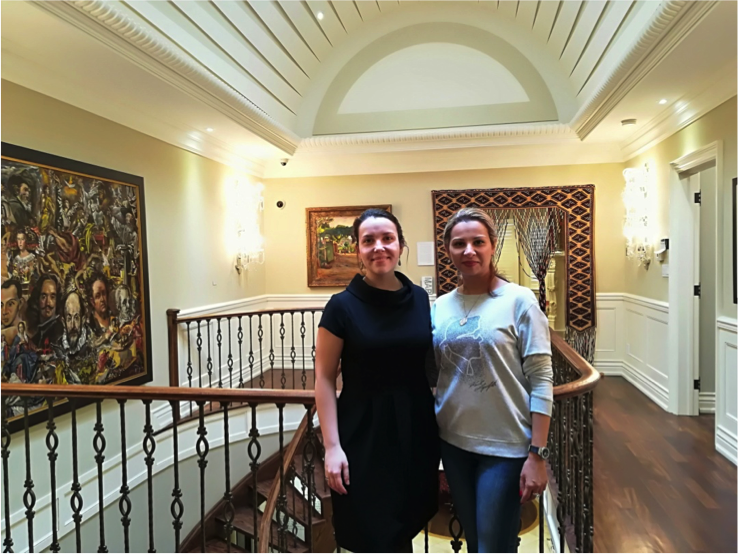
K. Aslıgül Atabay
1989 yılında, İstanbul’da doğdu. Cağaloğlu Anadolu Lisesi ve Koç Üniversitesi Hukuk Fakültesi’nden mezun oldu. 2014 yılında yasal stajını tamamlayarak İstanbul Barosu’na kaydoldu. Ardından eğitimine Kanada’da devam ederek York Univeristy Osgoode Hall Law School’da 2014 – 2015 yılları arasında International Business Law hukuk yüksek lisansı (master), 2016 – 2017 yılları arasında da Canadian Common Law hukuk yüksek lisansı (master) yaptı. 2017 yılında Kanada’daki fark derslerini tamamlayarak Kanada Hukuk Federasyonu Ulusal Akreditasyon Komitesi (Federation of Law Societies of Canada National Committee on Accreditation) tarafından verilen ve Kanada’da hukuk fakültesi diploması denklik belgesi olan Certificate of Qualification aldı. Akademik çalışmalarına halen Kanada’da devam etmekte olup, Kanada’da kurulmuş çeşitli Türk organizasyonlarının faaliyetlerine gönüllü olarak destek vermektedir. Ayrıca İstanbul Barosu’na kayıtlı avukattır ve İngilizce ve Almanca dillerini akıcı olarak konuşabilmektedir.
